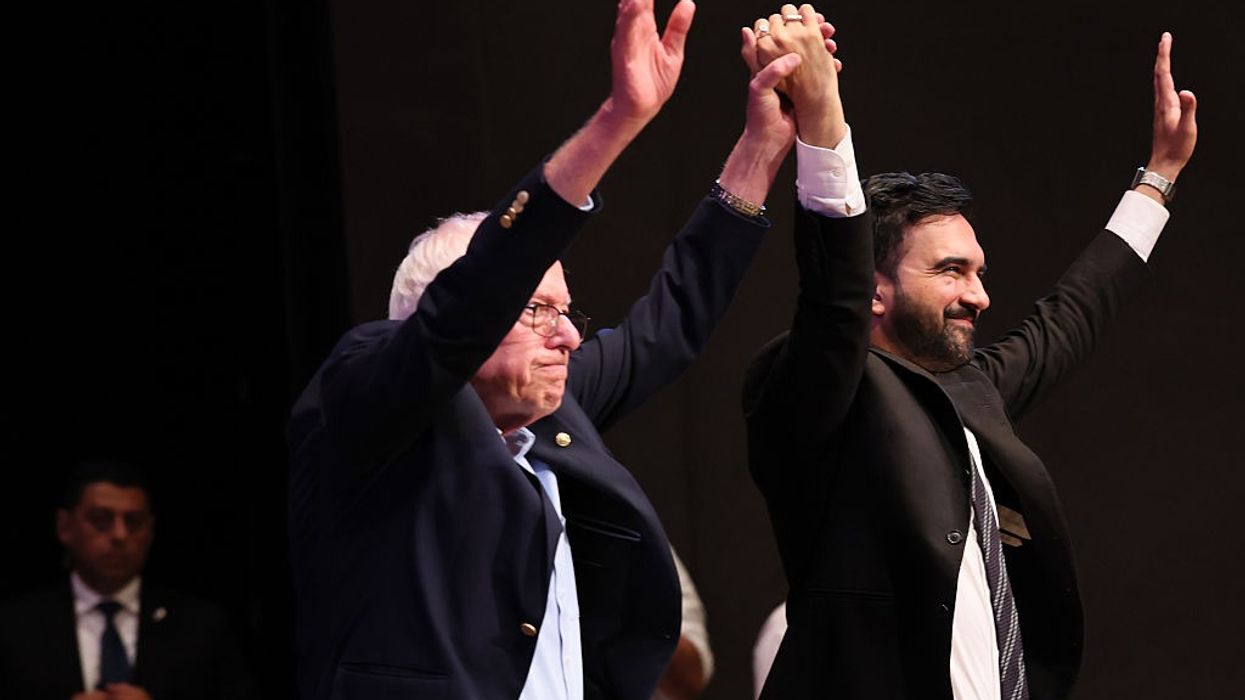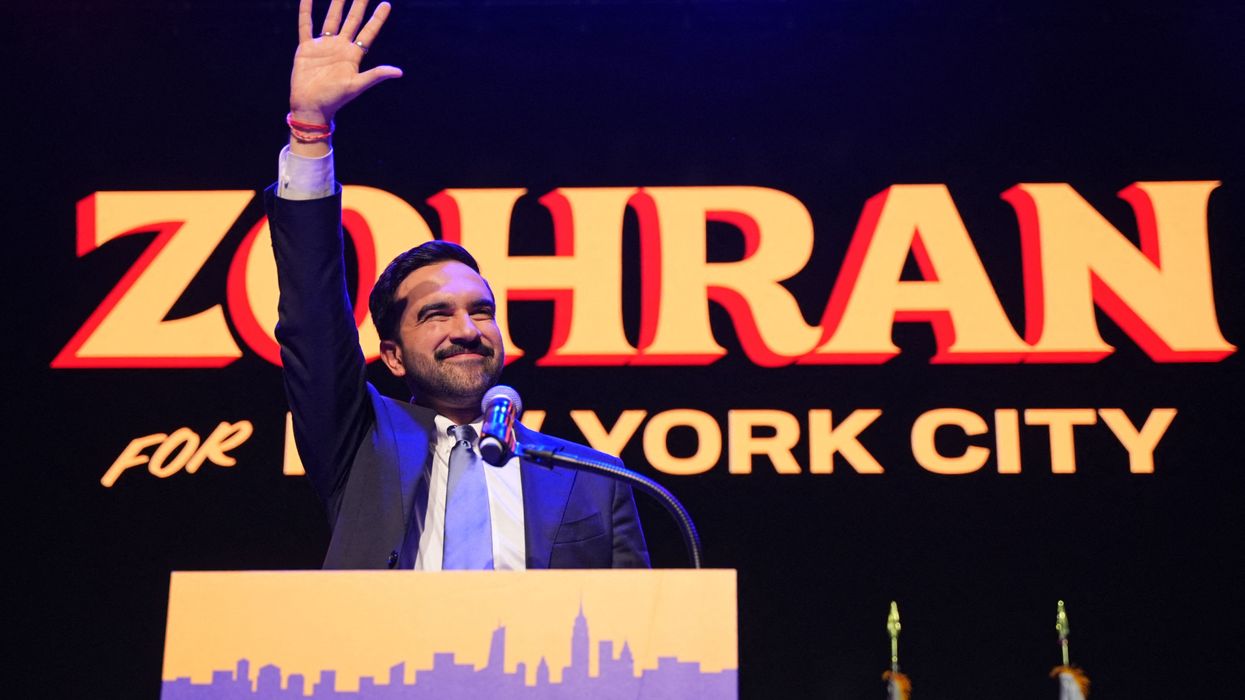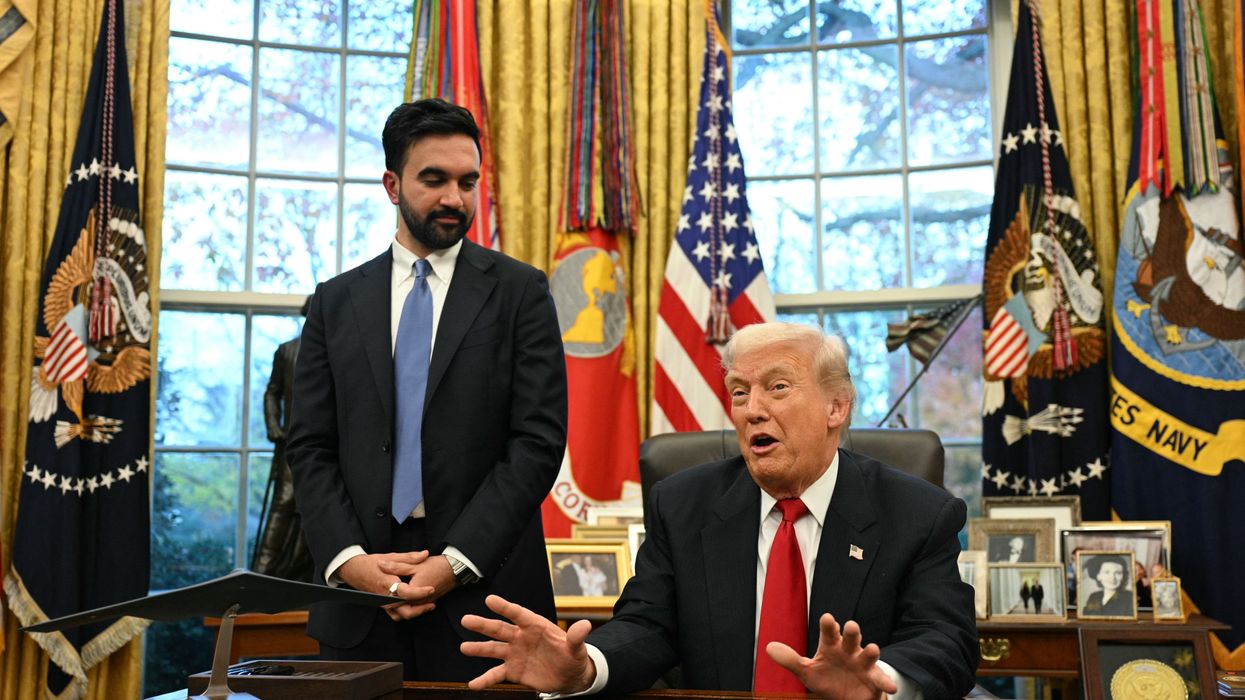We Have to Create a New Form of Society
Our job is to recognize the problems are real and to put the finger on the real cause of the problem, which is the greed of the oligarchs in this country.
Independent Vermont Sen. Bernie Sanders delivered these remarks at the How We Win conference over the weekend of December 5 in New Orleans. They were originally transcribed and published by Jacobin. The conference was organized by the Democratic Socialists of America Fund, Jacobin, the Nation, and others for democratic socialist elected officials and their staff.
Thank you for inviting me to say a few words. Let me begin by thanking all of you for having the guts to run for public office. It’s a lot harder to go out and knock on doors to represent constituents with the problems they face seven days a week, so I want to thank you very much for that. Despite the horror in the White House right now, they’re out there all across this country. We’re seeing strong progressive growth. It is not just Zohran Mamdani in New York or Katie Wilson in Seattle. From coast to coast, you are seeing progressive democratic socialists standing up, taking on the establishment, and winning elections.
And one of the great secrets of the corporate media is that right now in the House of Representatives, the Congressional Progressive Caucus has about 100 members, including dozens and dozens of very strong progressives. That is the result of the hard work all of us have done over the last number of years.
I’ve been asked to give you some advice. What I’m gonna tell you is probably what you already know. No. 1, here is a radical idea: Do your job that you were elected to do. Now, I’ll tell you a story. I was elected to be mayor of Burlington, Vermont, and won it by 10 votes way back in 1981. We had a strong foreign policy. We had exchange programs. We dealt with national issues. But I’ll never forget, there was an article in the local newspaper, and the report asked some guy, “But what does it mean? What do you think about having a socialist as your mayor?” And the guy said, “Well, I don’t know much about socialism, but I do know they’re getting the snow off of the streets a lot faster than they used to.”
The struggle is going to be between the Trumpists of the world—right-wing extremism—and a democratic socialist alternative, which recognizes the problems that we face and provides concrete and real and bold solutions for working families.
You gotta do your job. If you’re on the city council, the school board, the state legislature, you gotta do it. And if you do your job well, people will give you the latitude to talk about many, many other issues. But don’t lose focus regarding the job that you are elected to do.
Second of all, establishment Democrats have the brilliant idea that the only people they can talk to are establishment Democrats. They literally have lists of people: “Don’t knock on this door; don’t knock on that door. Only on these.” I strongly disagree with that suggestion. Knock on every door in your district. And what you’ll find when you do that is you’ll have the right-wing people slam the door in your face. You’ll have some unpleasantness. But by and large, what you’ll find is that there is a lot more commonality of interest than you might have appreciated. In my view, the reason Donald Trump is president of the United States today is not because people voted for a trillion dollars in tax breaks for the 1% or massive cuts in healthcare. He is the president of the United States because of Democratic establishment candidates’ failure to provide a real analysis and agenda that meets the crises that we face today.
Establishment Democrats believe that you can tinker around the edges, you can tell the world how terrible Donald Trump is, and that’s fine. But right now, what the American people understand is that übercapitalism—an oligarchic form of society, which is what we have today—is a disaster for the working class of this country. We don’t have to tinker around the edges. We have to create a very new form of society.
So for just your average person out there, you are in many cases going nowhere in a hurry. You understand that with real inflation accounted for, wages are basically the same as they were 50 years ago, despite a huge increase in worker productivity as a result of all of the expansion of technology. And almost all of the gains of that new technology have gone to the 1%. And ordinary workers know that there’s something wrong with 60% of our people living paycheck to paycheck while Elon Musk owns more wealth himself than about the bottom 52% of American society. They know that.
They know that there’s something wrong when we have a campaign finance system that is totally corrupt and allows billionaires in both political parties to buy elections. That’s a broken system. I say these things because you’re gonna have Republicans who understand this as well. They understand if you look at the basic necessities of life—just think for a moment: You’re living in the richest country in the history of the world, and it cannot even provide the basic necessities of life for working people.
Just take a look at the healthcare in your community. Talk about healthcare. Everybody will tell you that despite spending twice as much per capita on healthcare as any other nation, the healthcare system is totally broken. Everybody knows that. The educational system is largely broken, and the childcare system is a disaster. Kids can’t afford to go to college, or they’re leaving school deeply in debt. Public schools are under enormous pressure. Teachers are underpaid. They’re dealing with all kinds of disciplinary issues, kids who come from troubled families or are acting out in school. We are dealing with a situation where our food system, just nutrition... we are the most obese and unhealthy nation on Earth because you have a food industry that makes huge profit by selling our kids crap, and the price of groceries is soaring.
People understand that. I flew in from the National Airport in Washington; there was a four-hour delay because they couldn’t figure out how to deice the plane. All over the country, you are looking at basic problems people are struggling with. The system is failing. Our job is not to run away from that reality but to offer a real alternative. Because in my view, what the future is gonna be about isn’t establishment Democrats. All over Europe, for example, the establishment parties are fading away. The struggle is going to be between the Trumpists of the world—right-wing extremism—and a democratic socialist alternative, which recognizes the problems that we face and provides concrete and real and bold solutions for working families.
So what Donald Trump does is go, “Yeah, we got a lot of problems. And the problem is undocumented people, the problem is the trans community, the problem is that we have Somalians who are ‘garbage.’” That’s what demagogues do. They take the problems that we face—often that they cause—and then they blame a powerless minority. Our job is to recognize the problems are real and to put the finger on the real cause of the problem, which is the greed of the oligarchs in this country. So that’s where we’re at now. And it ain’t gonna be easy. Especially with Trump in the White House.
To summarize, the American people know the system is broken. They are hurting. They can’t afford groceries. They can’t afford health care. They can’t afford education. They can’t afford a lot of things. And at the same time, the billionaire class has never had it so good. The establishment Democrats cannot talk about these things because, very often, they’re getting funded by the billionaire class. So what we have gotta do right now is get out into the streets. We gotta talk to our people—all people, not just people within our zone of comfort. And we’re gonna be providing real solutions to the crises that we face. So once again, what you have done is extraordinary. I thank you so much and congratulate you for getting out on the streets, for winning elections, and for standing up for working people.


